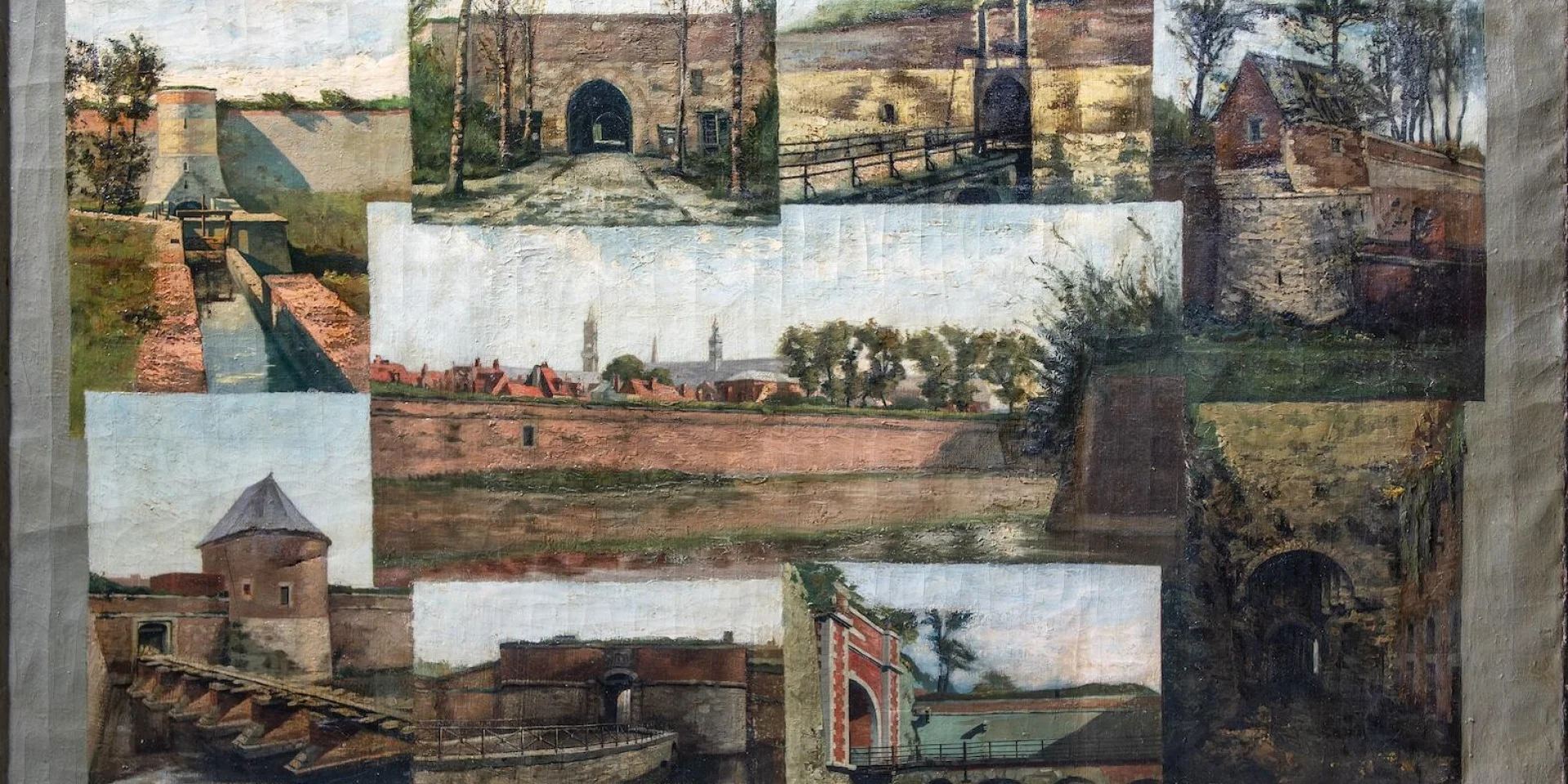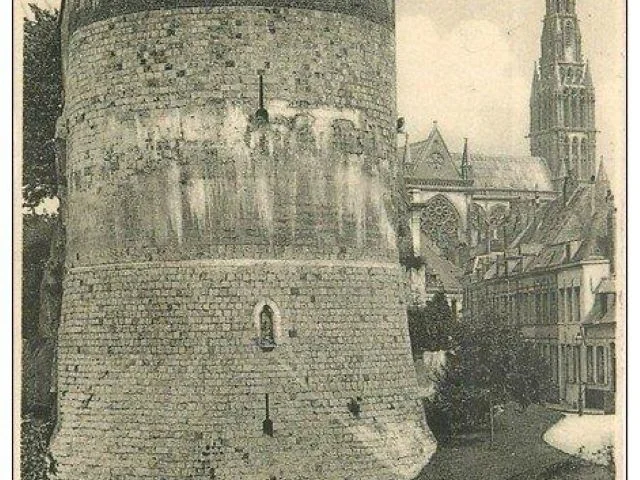TROMPE L’OEIL PAINTING REPRESENTING 9 DIFFERENT VIEWS OF THE OLD FORTIFICATIONS.
Late 19th-early 20th century – médiathèque Simone Veil – Jean-Baptiste REGNER n.d.
In this trompe-l’œil, painter Jean-Baptiste Régnier creates a unique kind of copy! Combining the traditional technique of oil painting with the then burgeoning medium of the postcard, he juxtaposes 9 views of the fortifications of Valenciennes, at the very time of their destruction. To do this, he used the images presented in Edouard Mariage’s Atlas valenciennois, whose aim was to retrace, in maps and images, the history of the city of Valenciennes, and in particular the destruction of the fortifications. A photograph by Jules Delsart and a watercolor by Georges Guillaume depict the Porte de Lille from the same angle. Jean-Baptiste Régnier faithfully reproduces it in the lower part of this collage.
RUE DU PETIT FOSSART
Petit Fossart” and “Grand Fossart” are reminders of the ditches that once completed the town’s defensive system. Beautiful old bourgeois homes line this road, which once ran along the inside of the town’s ramparts.
The entire square was dismantled at the end of the 19th century, and all that remains today, along with part of the citadel, are the Repenties lock, the Dodenne tower, the underground passages of the Capucins bastion and the buried Rhonelle aqueduct.
THE TOUR DE LA DODENNE
This tower, with its impressive 11m diameter, is the most remarkable of the rare remains of Valenciennes’ fortifications, dismantled between 1891 and 1893. Its architect, Michel de Raims, built it between 1447 and 1449 to reinforce the city’s defenses. A water gate – today one of the few preserved in France – controlled the entrance to the town from the Rhônelle, a small river that flows into the Escaut, to prevent it from overflowing. If, on the contrary, the floodgates were closed, the surrounding countryside would be flooded, making it impossible for the enemy to enter the town. The building was classified as a historic monument by decree on February 17, 1904. It was the first part of Valenciennes’ heritage to be protected, even before the law of December 31, 1913.

